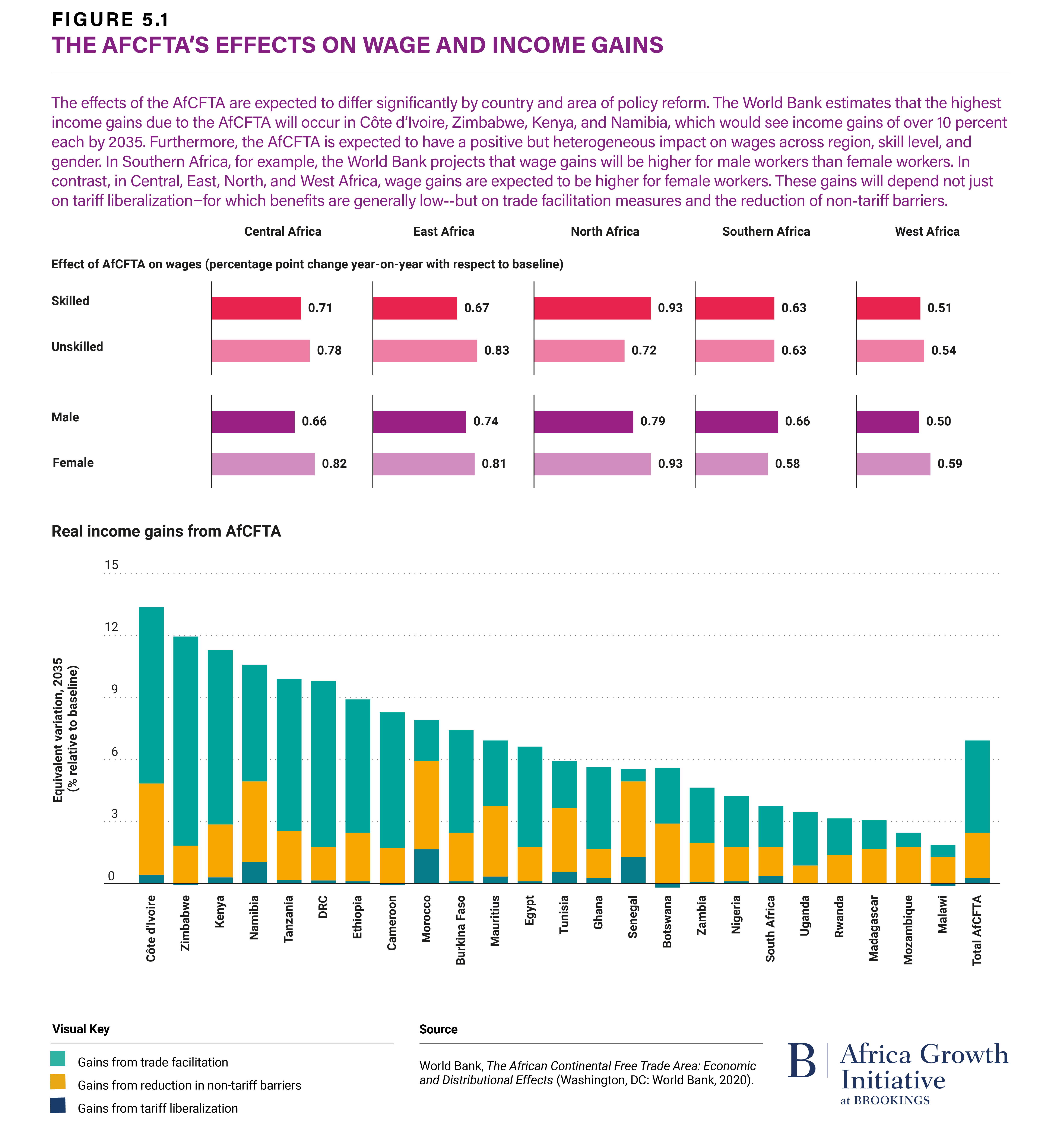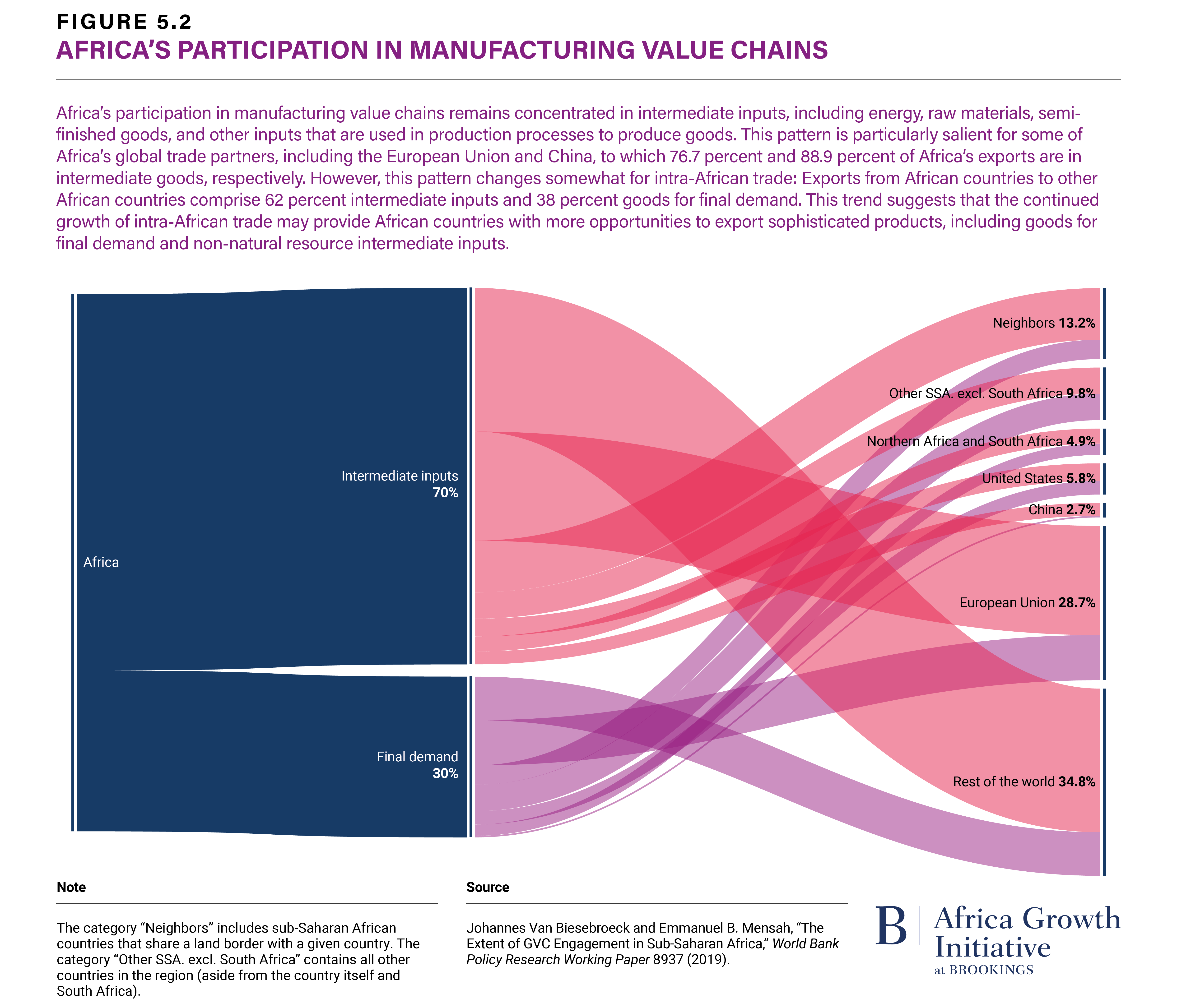05
Continental integration:
Uniting a revitalized Africa
Making the AfCFTA Vision our reality
On March 19, 2020, I was sworn in as the first secretary-general of the Secretariat established to coordinate the African Continental Free Trade Agreement (AfCFTA), The AfCFTA Secretariat, envisaged to be agile and nimble, is endowed with the autonomy to manage the affairs of the AfCFTA.
The moment of this formal induction had been a long time coming. The basic foundations of AfCFTA—the creation of a single market across Africa—had already been laid out in June 1991 with the Abuja Treaty which founded the Africa Economic Community. The AfCFTA is the latest refinement of this well-founded idea.
Still, I recognize that treaty-fatigue among the African elite still squares off against considerable lack of awareness of the possibilities afforded by the AfCFTA among the African general public.
“If inter-market connectivity, data access, and soft infrastructure are critical to the success of trade agreements, then, by addressing these issues early on and head on, the AfCFTA can gain much more traction than past trade agreements.”
We have a crisis of communication and inspiration, as Africa’s top political actors, academics, and journalists constantly complain of hearing too much about AfCFTA and its associated African Union formalities. Then again, a recent survey showed that only 26.2 percent of firms in Ghana, the operational seat of the AfCFTA Secretariat, have even heard of the AfCFTA, much less are well prepared to benefit from its low-to-zero tariffs, price advantages, and other competitive gains afforded when they conduct transactions around the continent under the AfCFTA.
Quite often, experts cite limited infrastructure and capital as the common barriers to the success of previous agreements, however, well-established broad market information barriers have also contributed to that underperformance.
If inter-market connectivity, data access, and soft infrastructure are critical to the success of trade agreements, then, by addressing these issues early on and head on, the AfCFTA can gain much more traction than past trade agreements. Because the issues of infrastructure and access to capital that have bedeviled previous trade agreements on the continent cannot be solved overnight, approaching them now and with vigor can lay the groundwork for a more successful future.
Similarly, appropriate soft infrastructure-enabled mechanisms—such as enhanced connectivity, more effective training delivery, and stronger feedback loops, complaints channels, and resolution methods—can boost the capacity-building of trade and customs officials and better align structural policy for overall deeper integration.

AfCFTA Vision
It’s with these past challenges and future possibilities–for the millions of small businesses and traders that constitute 90 percent of the economic actors whose lives the AfCFTA is meant to change—in mind that we approached “start of trading” under AfCFTA on January 1, 2020. For months, the small team with me here at the Secretariat has been laboring to align all the pieces necessary to make AfCFTA unique in terms of traction and impact given this elaborate context.
Importantly, I must emphasize that there are two things far more prevalent today than at the time of earlier trade agreements on the continent: ubiquitous digital technology and social networks for knowledge creation and sharing. If we immediately, rapidly, and aggressively harness those trends to address soft infrastructure issues while we ramp up capacity to tackle the harder infrastructure and material resources bottlenecks, we stand a very strong chance of making a bigger dent in the Africa transformation agenda than previous integration efforts so far.
Thus, late last year, we launched AfCFTA Vision, a combination of social advocacy campaigns, innovation contests, and technology strategies to unify the diverse interest groups on the continent behind the Grand Vision propelling the AfCFTA.
The elements of AfCFTA Vision are 1) a platform for knowledge creation and sharing through online debates and forums (www.afcfta.blog); 2) a tool to empower innovators and entrepreneurs to market their ideas for solving critical problems identified by Africa’s political leaders and foremost thinkers (www.afcfta.blog/challenge); and 3) a comprehensive technology strategy that facilitates connections across all key actors rapidly, cost-effectively, and efficiently, regardless of their size, since, historically, small and medium enterprises in particular have not been able to take advantage of trade agreements. The technology strategy for AfCFTA should include a central business registry and “trusted identity/profile” available at no cost (without subscription) to all entities wishing to trade under AfCFTA beyond their own country. This registry is expected to power a smart trade directory to facilitate business due diligence, facilitate Know-Your-Customer procedures, and foster trust among trading and transacting parties across Africa.

How we get the AfCFTA to be for the everyday African: Leveling the playing field
We want to make trade easier for the African businessman and woman. For example, if a Gambian small or medium enterprise wishes to sell peanut butter to a Namibian supermarket, the verification of track record and exchange of business credentials should be far simpler and smoother than it is right now. We ultimately want to see the peanut butter standards and traceability documents all digitally transferable across the Gambian-Namibian virtual trade border.
The specific technology elements of helpful tools such as machine learning and blockchain, among others, are less critical than a clear policy vision. Shared trust among African traders can be formalized with standardized passporting and e-certificates for rules of origin and customs declarations under the AfCFTA. Similarly, we want to make it easier for guarantees and letters of credit to be scaled down to a level where even the smallest players can afford to utilize them; novel tools like Pan-African Payments & Settlements Platform (launched by Afreximbank) help us do so.
And, of course, the Namibian peanut butter importer must first even know about the existence of the opportunity—a possibility that requires multi-stakeholder (both public and private) collaboration bridging upcoming continental trade observatories and market intelligence portals.
“Partnerships are critical, especially as the instruments explicitly identified for the successful implementation of the AfCFTA are technological, covering the processes of interstate engagement, intelligence-gathering and information-sharing, and trade facilitation.”
But it all starts with collaborations around creating a set of core apps to get people sharing data and exploring opportunities together. Such clever configurations would constitute the “terminal” in which other digital applications can dock if they have synergies with what we are all trying to drive forward in Africa through AfCFTA.
Finally, none of these ambitious but achievable goals can happen if the AfCFTA Secretariat is pushing all on its own. We need partnerships. For example, our AfCFTA Vision launch partner is the Sankoree Institute of AfroChampions, the multi-stakeholder organization that has been the African Union Strategic Partner driving the AVRIVA program (www.avriva.org). We are searching for a wide range of strategic partners, starting with the development finance institutions and business associations.
I am delighted to report that the strategy of building strong partnerships and alliances with the private sector has already ensured an increase in the capacity of the Secretariat to continue the good work that has been done on the technological front by the AU Commission.
Such partnerships are critical, especially as the instruments explicitly identified for the successful implementation of the AfCFTA are technological, covering the processes of interstate engagement, intelligence-gathering and information-sharing, and trade facilitation.
In the end, technology is merely a tool. What really drives progress and achieves goals is the shared vision of those partners. It is the meeting of technology, vision, and partnerships that, I strongly believe, will make AfCFTA the engine of Africa’s new reality. Please come on board.




